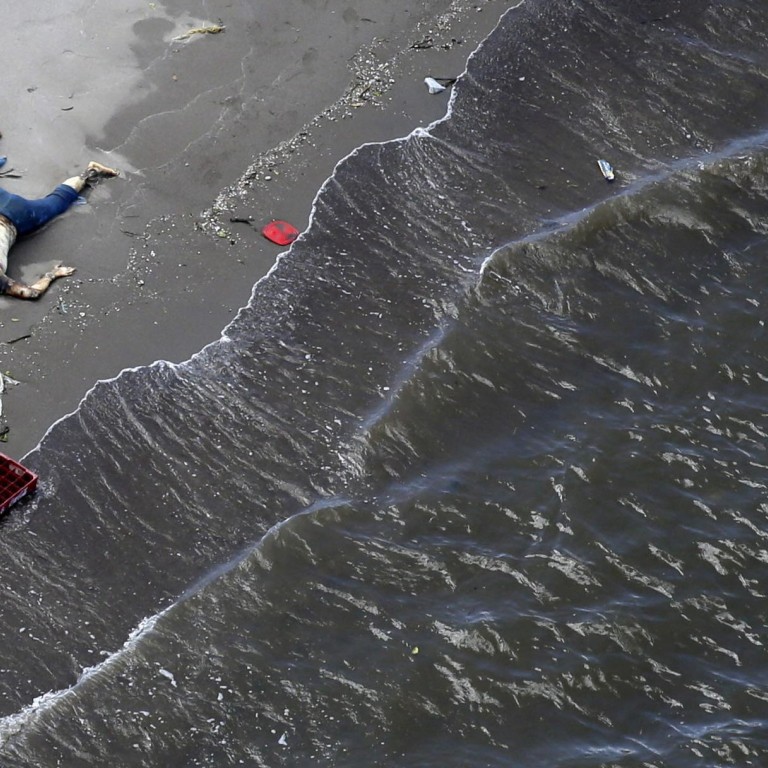
Grim task of collecting the corpses in Philippines goes on
A week after one of the strongest typhoons ever tore through the Philippines, bodies still lie where they fell or were washed up.
A week after one of the strongest typhoons ever tore through the Philippines, bodies still lie where they fell or were washed up.
The stench of bloated and discoloured human flesh decomposing under the tropical sun hangs everywhere in Tacloban, where survivors and rescue workers cover their mouths to keep the cloying smell from their throats.
Hundreds have been collected, put into body bags and trucked off to wrecked municipal buildings to await burial in mass graves, a process that city authorities began on Thursday.
Officials and aid volunteers say those bodies that have been recovered are just the beginning, a small fraction of those that could be seen when the storm surge subsided.
Many more, they say, lie under the mountains of debris.
"Leaving the bodies just decaying on the roadside, uncollected, is next to unforgivable," local Catholic priest Amadeo Alvero said. Officials initially said picking up the bodies had to take second place to the effort to help those still living, many in utter destitution, their homes swept away and with precious little food or clean drinking water.
But they also conceded they had simply been overwhelmed by the number of dead, and had temporarily run out of body bags.
Echoing a fear expressed by many, Alvero said the dead could be the source of contagious disease. "The government needs to act fast because this could also become a health issue," he said.
Health Secretary Enrique Ona insisted the bodies did not pose a serious risk. Experts say a corpse can carry a disease such as cholera only if the disease was present before the person died.
"We have to assure our countrymen that ... there will not be an epidemic," he said. "The one thing we want is to identify them so we can give some peace to their relatives." Identification is not always easy, for instance when whole families have died, leaving no one around to ask.
Teams have been sent to Tacloban from the Justice Department's investigating arm and the police crime laboratory.
They know they will not identify every body they find straight away, but hope to collect enough evidence to allow it to be done later. "On the scene, our doctors begin the documentation," said Chief Superintendent Liza Sabong, head of the national police crime laboratory and part of the contingent sent to Tacloban.
"We tag them as male or female, they photograph them and list the belongings on the cadaver itself.
"We do fingerprinting. We measure the body and then they are placed in cadaver bags."
This "processing" will allow any surviving relatives at a later date to identify the body, possibly through its clothes or appearance, she said. But the sheer scale of the task is overwhelming.
Only 13 of the 182 bodies collected by Sabong's group have been picked up by their relatives, she said. The rest have been left behind.
Tacloban on Thursday began mass burials of some of those bodies that had been bagged and laid out by the shattered city hall.
The plan, said mayor Alfred Romualdez, was that all those whose name and family were known would be placed into one huge pit.
The unidentified rest would go into a separate mass grave.
